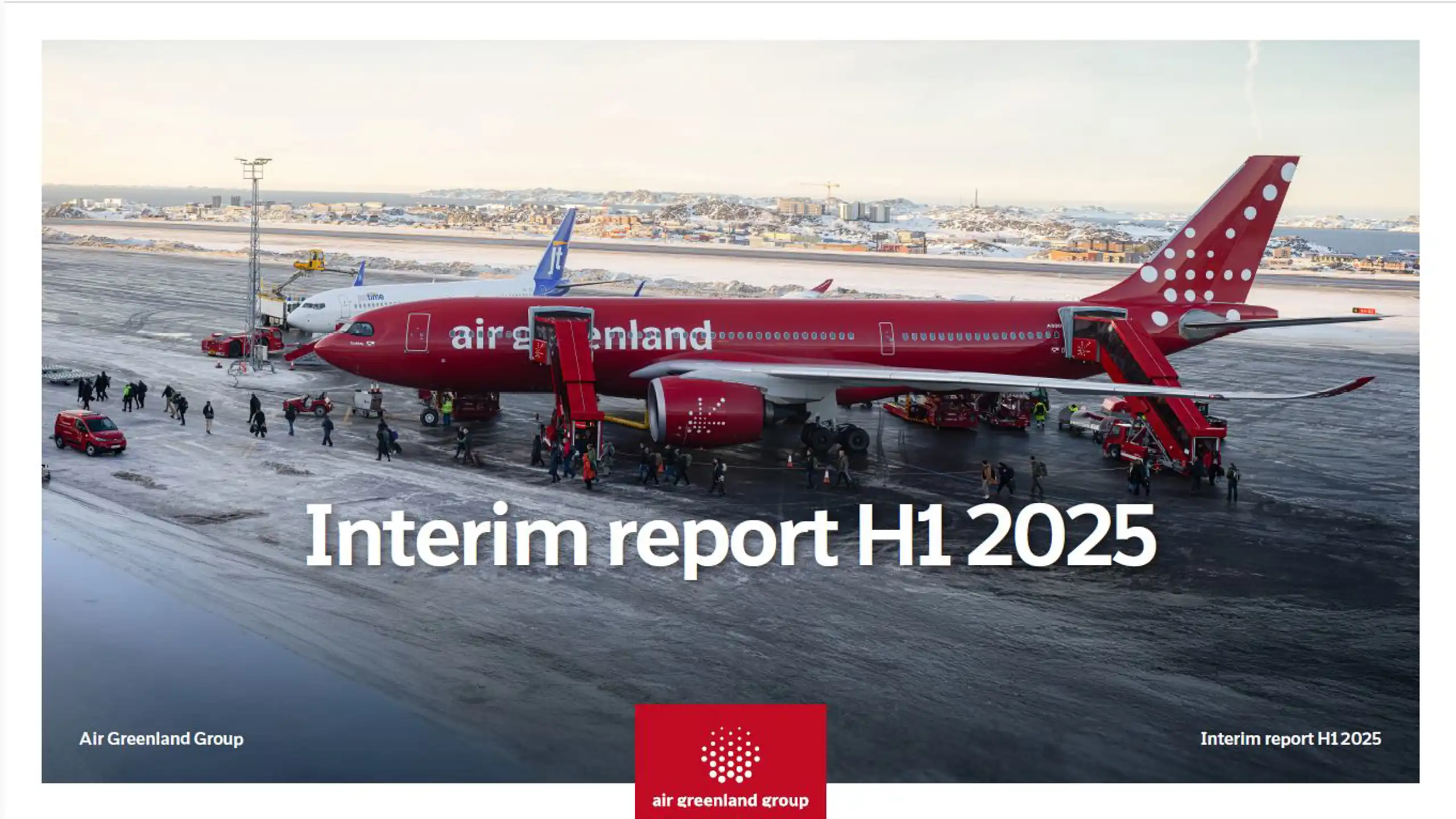
Air Greenland’s Half-Year Results 2025 marked by transition and operational challenges
The Board of Directors of the Air Greenland Group has approved the interim report for the period 1 January to 30 June 2025. The report reflects a half-year shaped by significant changes following the relocation of international flights from Kangerlussuaq to Nuuk, combined with substantial operational challenges due to adverse weather and delays related to the commissioning of the new infrastructure at Nuuk Airport. Since late November 2024, the airport has served as the central hub for both domestic and international operations and is the first of three new airports to be brought into service.
The Group reported a pre-tax loss of DKK 87.4 million for the first half of 2025 – an increased loss of DKK 66.3 million compared to the same period in 2024. The cabin factor was lower than in previous years, despite a rise in international passenger numbers.
Key drivers of the negative result include:
- Historically poor weather conditions
- Airport-related issues, including icy runways, delays in security checks, baggage handling, and fuel delivery at Nuuk Airport
- Long lead times for spare parts
These factors led to 59 jet flight cancellations in H1 2025, compared to just 3 in the same period last year when Kangerlussuaq was the main hub.
 |
The regularity of the fixed-wing fleet (Dash-8) dropped to 72.0% (2024: 83.9%), and on-time performance fell to 46.6% (2024: 71.1%).
The transition to Nuuk as the new hub has significantly impacted domestic traffic patterns.
Feeder traffic has decreased by 53%, and remaining passengers now fly on average 54% longer distances—particularly those from Northern Greenland—without full reflection in ticket prices. This has negatively affected profitability in the domestic market despite minor fare adjustments. |
Total costs including depreciation increased by DKK 89.5 million (+10.3%), primarily due to increased production and higher costs related to operational disruptions. Direct irregularity costs rose to DKK 70.9 million in H1 2025, up from DKK 36.5 million in H1 2024. Personnel expenses increased by DKK 12.8 million, with the average number of full-time employees rising to 711 (2024: 704).
Cash flow from operations amounted to DKK +169.7 million, and the Group’s cash holdings increased to DKK 164.6 million, in line with expectations. Equity stood at DKK 726.3 million, corresponding to a solvency ratio of 34.3%.
Outlook for 2025 Adjusted
Based on developments in the first half of the year, the Board has revised the full-year outlook and now expects a pre-tax loss of DKK 30.0 million for 2025, assuming no further external disruptions. Efforts are underway to adjust the flight schedule for optimal capacity utilization and to improve handling of passengers affected by irregularities.
The negative interim result is unlikely to surprise many, as the public – especially in Greenland – has been aware of Air Greenland’s challenges due to numerous cancellations and delays across several regions. Those directly affected include passengers, cargo customers, and Air Greenland employees.
“We are undergoing a major transition after many years of operating under the same traffic pattern and must now adapt to a new reality. While many of the challenges are beyond our control, we are part of the equation and take responsibility by implementing measures to stabilize operations where possible. We must improve regularity while maintaining our focus on implementing solutions and improving processes to enhance the customer experience, especially during disruptions. Weather is a factor we cannot influence,” says Jacob Nitter Sørensen, CEO.
|
|
“I would like to take this opportunity to thank our employees for their efforts. They have done everything they can – and more – to make things work under difficult conditions,” he adds.
|
Infrastructure Investments
Chair of the Board, Malik Hegelund Olsen, emphasizes that Air Greenland has taken on a significant societal responsibility by investing in operational facilities to support the new infrastructure.
 |
“It is crucial that we maintain our long-term ambitions, even under pressure from short-term challenges. The upcoming airports in Qaqortoq and Ilulissat must be ready for stable operations so we can realize our long-term strategy. This will benefit the country’s regions, its citizens, and the local business community, contributing to a more economically sustainable Greenland,” says Malik Hegelund Olsen. |
“Now that the summer peak season is over, management will evaluate and initiate new improvement initiatives aligned with the long-term strategy, and we will naturally support this process,” concludes the Chair of the Board.

